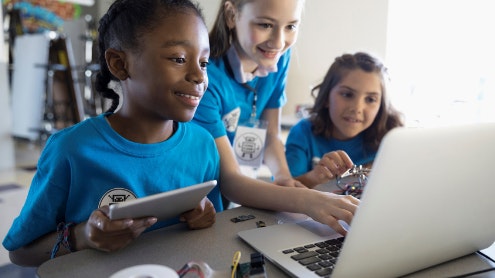Homepage
•
Learning Library
•
Blog
•
Use Coding to Engage Students in Reading, Writing Lessons
Expand breadcrumbs
Expand breadcrumbs
- Learning Library
- Blog
- Use Coding to Engage Students in Reading, Writing Lessons
- Homepage
- •
- Learning Library
- •
- Blog
- •
- Use Coding to Engage Students in Reading, Writing Lessons
Use Coding to Engage Students in Reading, Writing Lessons
By Julie Randles
February 26, 2021








